
 |
|
#106
|
|||
|
|||
|
Yes, the photos and the comments are really fascinating: all the small details, decisions and distinctions that make a hand built guitar unique. Things like the cap on the X-brace, for example. Equally interesting is to discover how unique each Franklin is: if you are surprised that there are only 4 side reinforcement strips in this build, looking at other Franklin build photos, there appear to be none! Looking inside my Franklin, there are none! I also notice that the small brace just under the sound hole is absent in some other builds. (Absent in mine as well) I wonder what determines those decisions for Nick. Perhaps some characteristic of the structure of the wood he is using on a particular build that needs to be addressed? A way of attaining the particular sound parameters that he and/or the customer is looking for? Nice that along with the guitars "birthday" and serial number, your name is noted under the top. Ok, so now I have to see what's written on mine!
|
|
#107
|
||||
|
||||
|
The answer is....
Nick normally, uses no side reinforcement on his guitars. This set of Cuban Mahogany has lots of curl and interlocking grain, particularly on the cutaway side he felt that some local side wall reinforcement was necessary in two places. The two on the other side were simply for visual symmetry. Every guitar off his bench is a bit unique, responding to the situation on the bench before him...  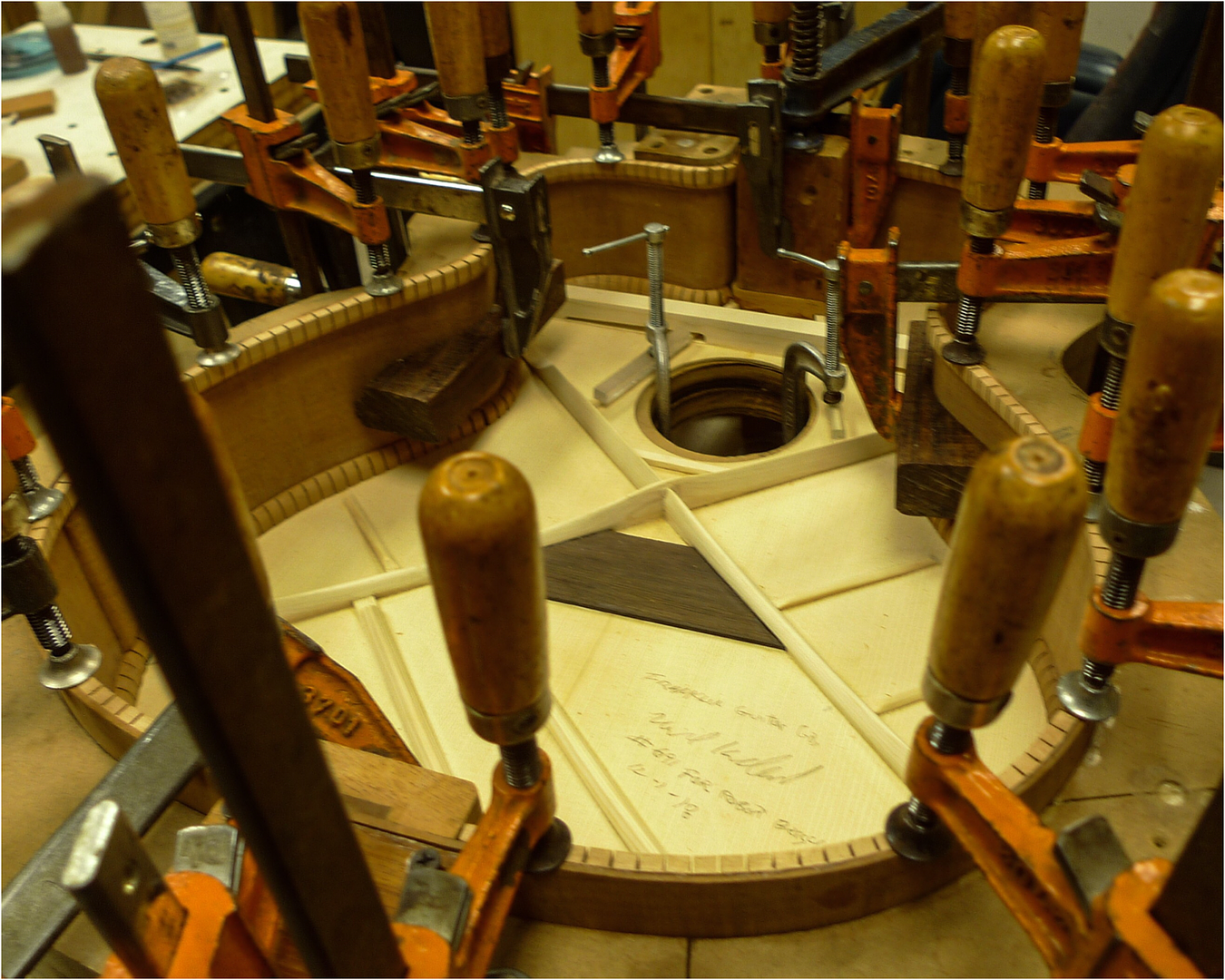 Quote:
__________________
A bunch of nice archtops, flattops, a gypsy & nylon strings… Last edited by iim7V7IM7; 12-08-2018 at 07:26 AM. |
|
#108
|
|||
|
|||
|
That makes sense, thanks!
|
|
#109
|
||||
|
||||
|
I think it is interesting to note the differences among builders all building what is called a guitar. Specifically, another build thread currently going on said they do not tuck the bridge plate under the braces for if it ever needed to be replaced it would be a much bigger job to do so which makes sense, then I stop by here to find the bridge plate tucked....
__________________
PS. I love guitars! |
|
#110
|
||||
|
||||
|
Yes Tom there are variety of approaches to design of guitars. There is indeed some wisdom to considering repair in the future...
 Bridge plates can fail a number of ways. Most commonly from string ball abrasion/compression around the bridge pin holes (typically requiring repair and not replacement) or cracking (most commonly between the bridge pin holes) due to bridge itself or top braces ungluing allowing the top to lift. The later type of failure typically requires a bridge plate replacement. Traditional CF Martin bridge plates were Sugar Maple which is hard, but nowhere near the hardness of the rosewoods that many builders now use. This mitigates against hole wear. Some luthiers also use rift sawn pieces to further mitigate against cracking between the pin holes. Nick uses BRW for his tucked plates and it appears to be quartersawn to boot. His lower bout dish is quite flat (>50’) which also mitigates against plate cracking as well. With nearly 700 guitars off his bench over 40+ years of building, I am comfortable that he has a method to his madness...  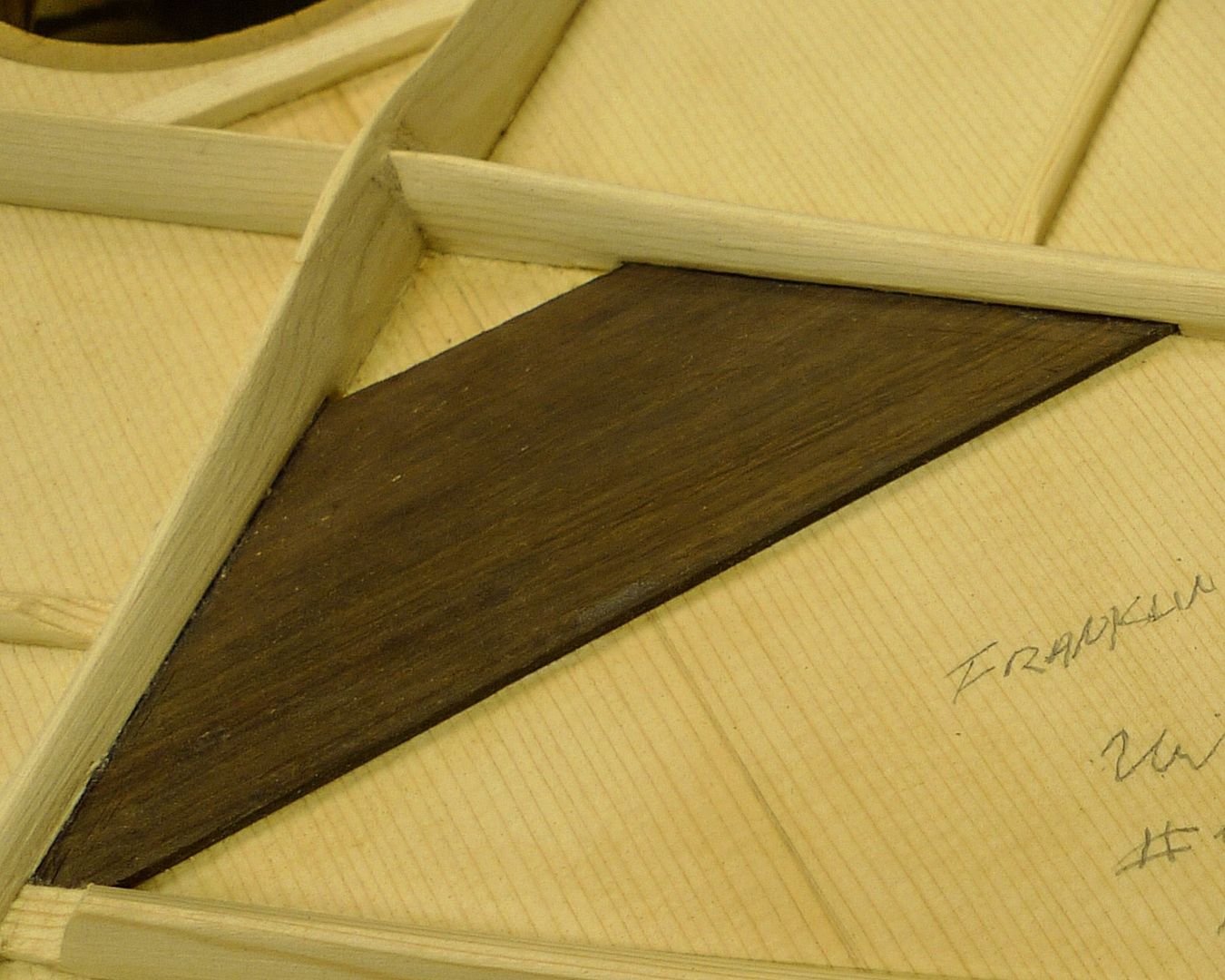 Quote:
__________________
A bunch of nice archtops, flattops, a gypsy & nylon strings… |
|
#111
|
||||
|
||||
|
Nick has the mounted the closed “box” on his rotatable, vacuum jig where he can hold and rotate the body relative to him while he scrapes the surfaces (left). The three Adirondack Spruce ladder braces can be seen perforating the back linings of the scraped Cuban Mahogany body. The guitar will soon be routed for bindings, purflings, backstrip and an end graft (right).
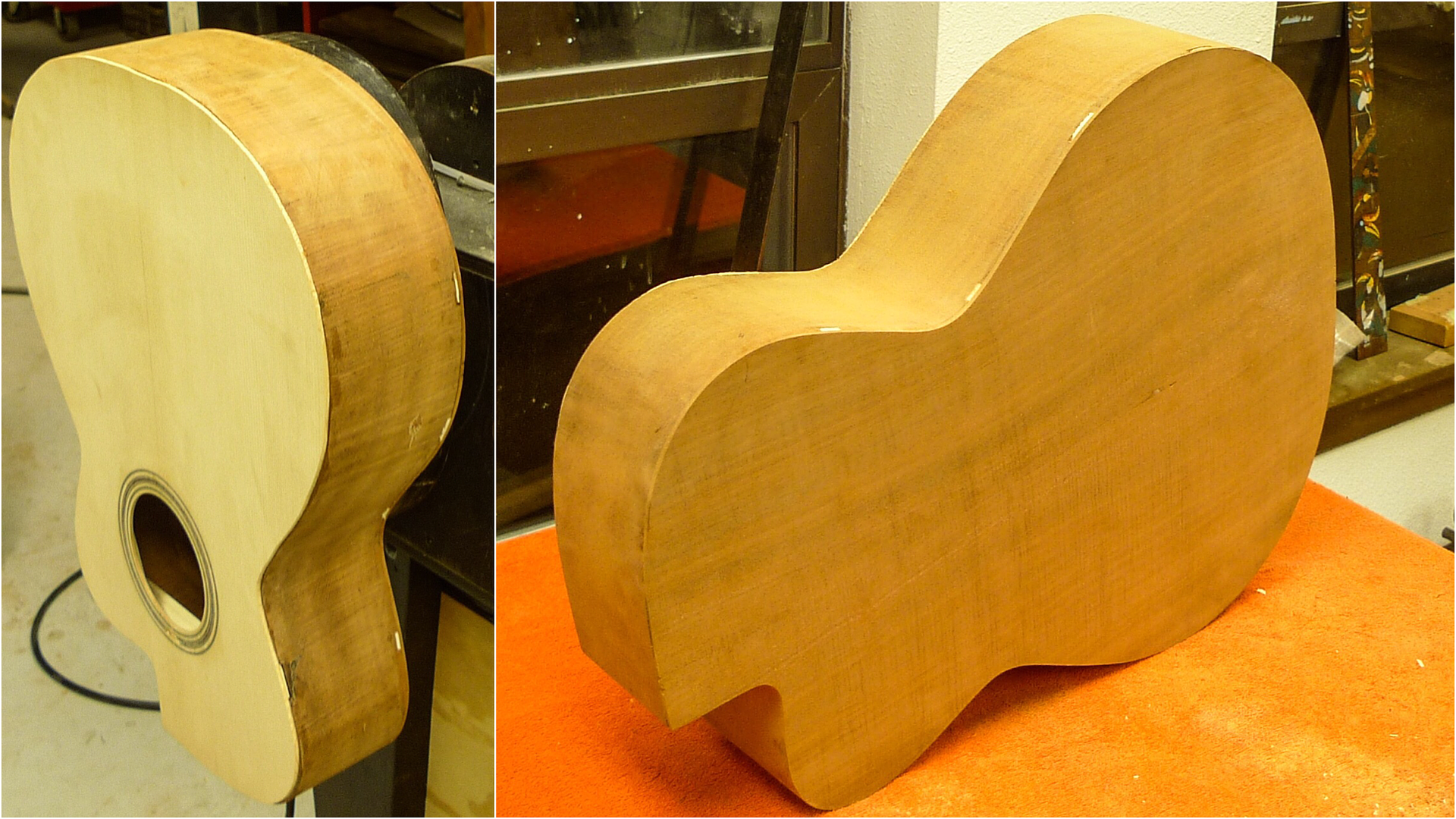 Here is the construction of the purfled, curly Sycamore Maple end graft. 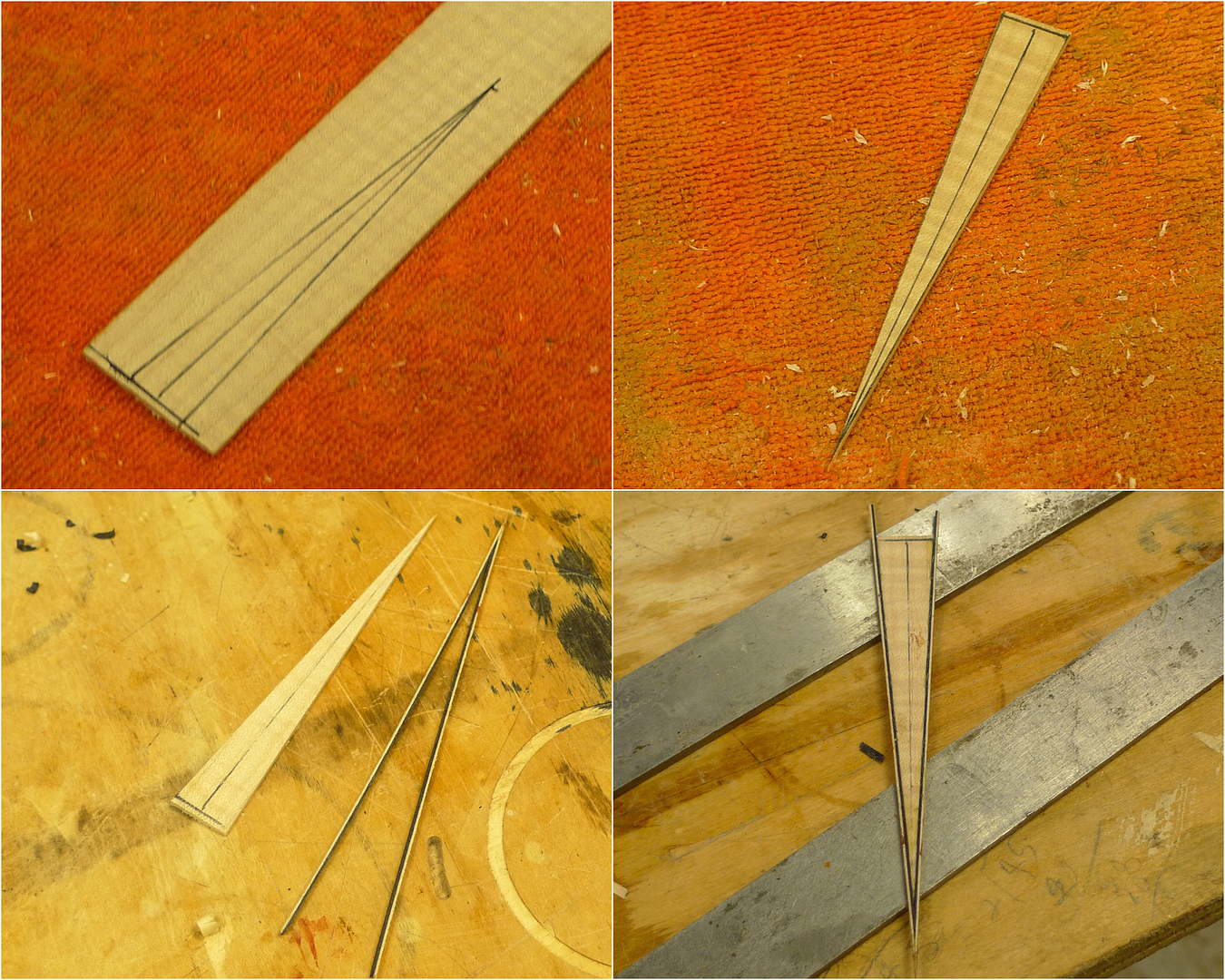 This series shows the back being routed and the the Maple/Black Fiber zipper backstrip installed. 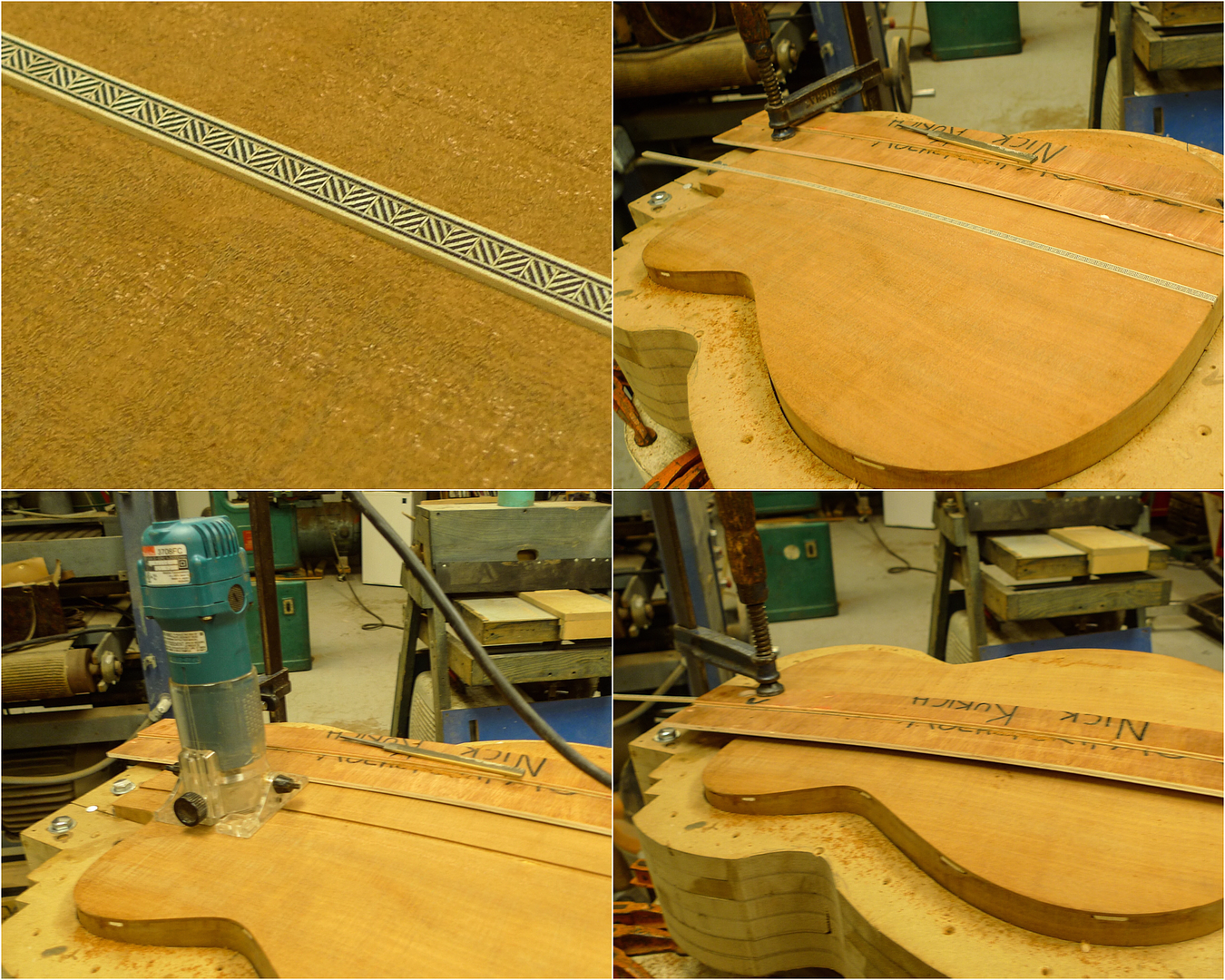 The backstrip is now installed and the end graft placed on the body for show (pre-routing). 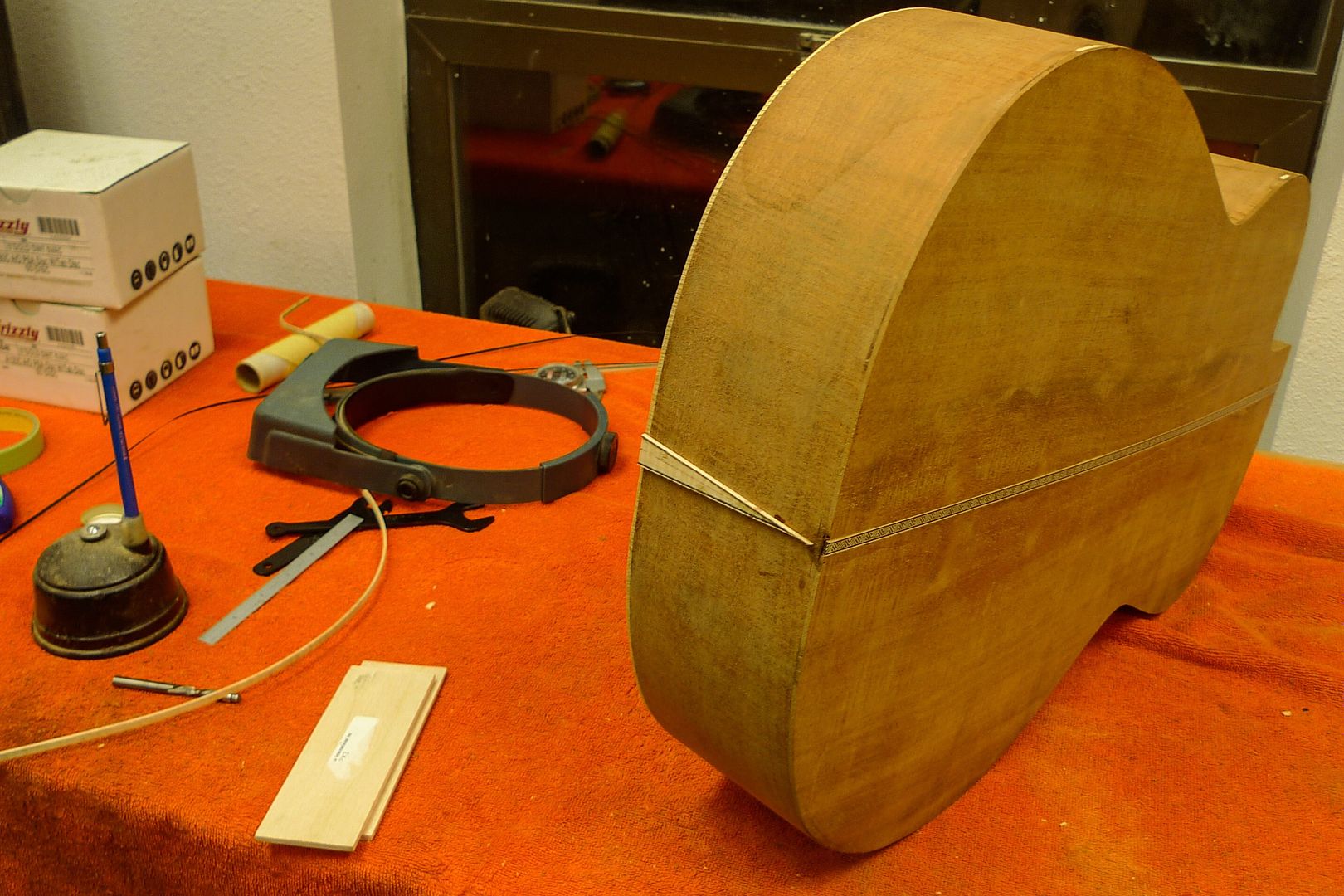
__________________
A bunch of nice archtops, flattops, a gypsy & nylon strings… |
|
#112
|
|||
|
|||
|
Thanks for sharing these pictures and insights of your amazingly fun build! What an adventure! Nick’s guitars are amongst my favourites and I count myself blessed to be able to own some of his fine instruments. I am certain your Franklin will exceed your expectations

__________________
Collings OM2H Adi / Braz Doerr Legacy Swiss / Braz Franklin OM German / Braz Franklin OM Carpathian / Braz Goodall GC Italian / Honduran Goodall GC Italian / Braz Goodall CJC Italian / Braz Goodall CJC Italian / Afr. Blackwood McPherson 5.0 Full Koa McPherson 5.0XP Adi / Braz Martin D-28GE Adi / Braz |
|
#113
|
||||
|
||||
|
This is becoming very real...!
__________________
onedayatatime |
|
#114
|
||||
|
||||
|
Super classy! Thanks for sharing the photos!
__________________
Circa OM-30/34 (Adi/Mad) | 000-12 (Ger/Maple) | OM-28 (Adi/Brz) | OM-18/21 (Adi/Hog) | OM-42 (Adi/Braz) Fairbanks SJ (Adi/Hog) | Schoenberg/Klepper 000-12c (Adi/Hog) | LeGeyt CLM (Swiss/Amzn) | LeGeyt CLM (Carp/Koa) Brondel A-2 (Carp/Mad) |
|
#115
|
||||
|
||||
|
This looks really nice!!!
Thanks for sharing. So many ways to skin a cat... haha Have a wonderful Christmas Paul
__________________
3 John Kinnaird SS 12c CUSTOMS: Big Maple/Cedar Dread Jumbo Spanish Cedar/WRC Jumbo OLD Brazilian RW/WRC R.T 2 12c sinker RW/Claro 96 422ce bought new! 96 LKSM 12 552ce 12x12 J. Stepick Bari Weissy WRC/Walnut More |
|
#116
|
||||
|
||||
|
Quote:
 They all approach the same goal so differently. They all approach the same goal so differently.Quote:

__________________
A bunch of nice archtops, flattops, a gypsy & nylon strings… |
|
#117
|
||||
|
||||
|
Nick has begun to route the channels for the curly Sycamore Maple bindings and Maple/Black Fiber back purflings (top). In the middle image you can see how the routed channels are terminated so Nick can miter the back purflings with the Maple/Black Fiber zipper backstrip. The bottom image shows his purfled, tapered curly Sycamore Maple end graft.
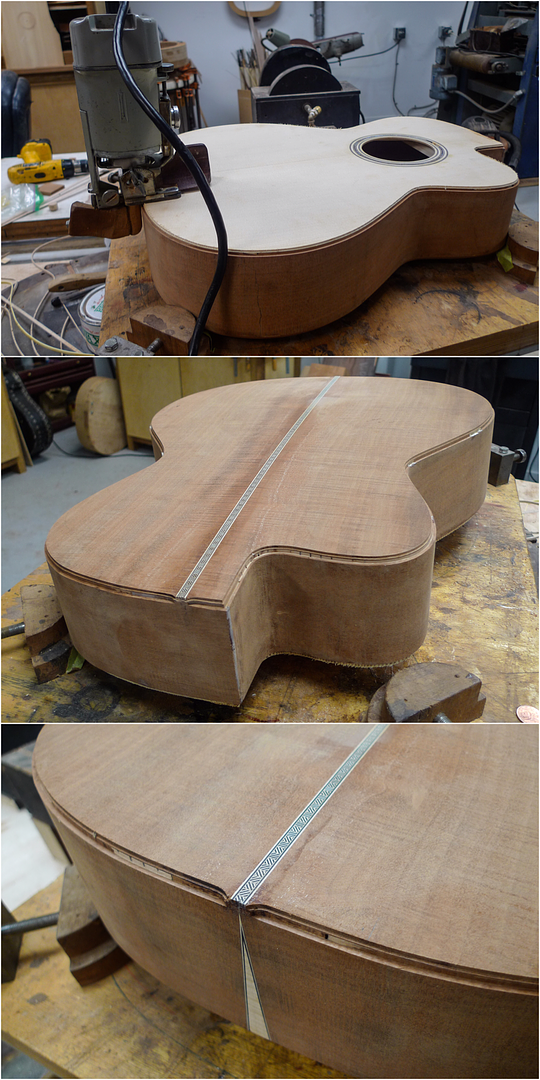 These two images show the neck end of the guitar. The bottom image shows the first miter cut into the Maple/Black Fiber zipper backstrip to abut the Maple/Black Fiber back purflings. 
__________________
A bunch of nice archtops, flattops, a gypsy & nylon strings… |
|
#118
|
||||
|
||||
|
This series of photos chronicles how Nick prepares his routed channels for mitered side purflings around the end graft junction. It also gives you a peak into an end view of the quartersawn grain of the 50-year old German Spruce top.
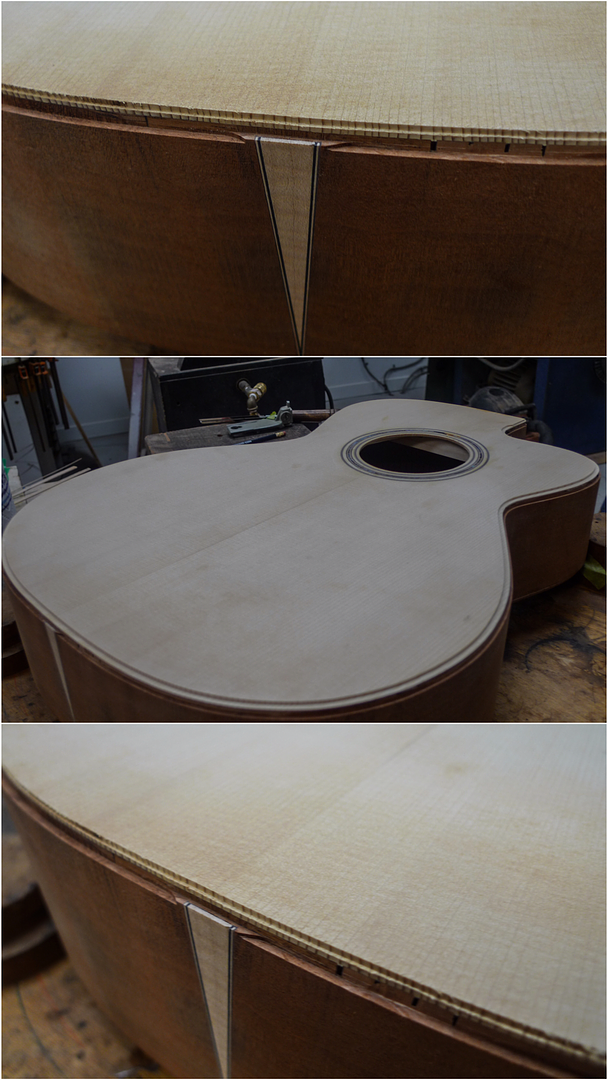 Here are the black fiber/maple back purflings being mitered at the zipper backstrip junction. Nick uses some scrap pieces of binding to affix it when glueing it in place. 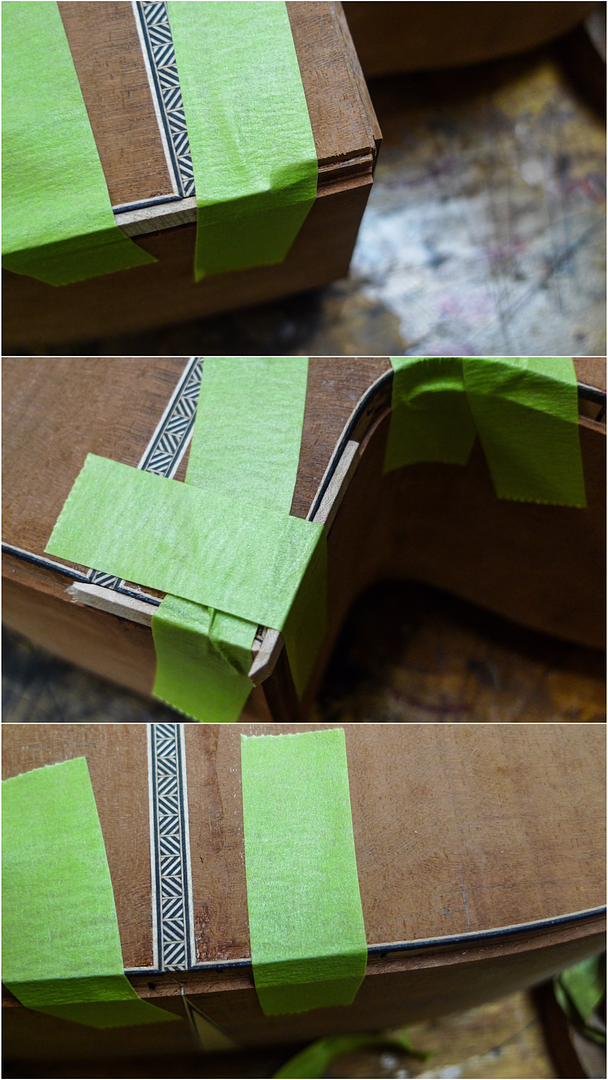 Bending the side purflings using a heated form and a hot pipe to form the 3/4” cutaway radius. 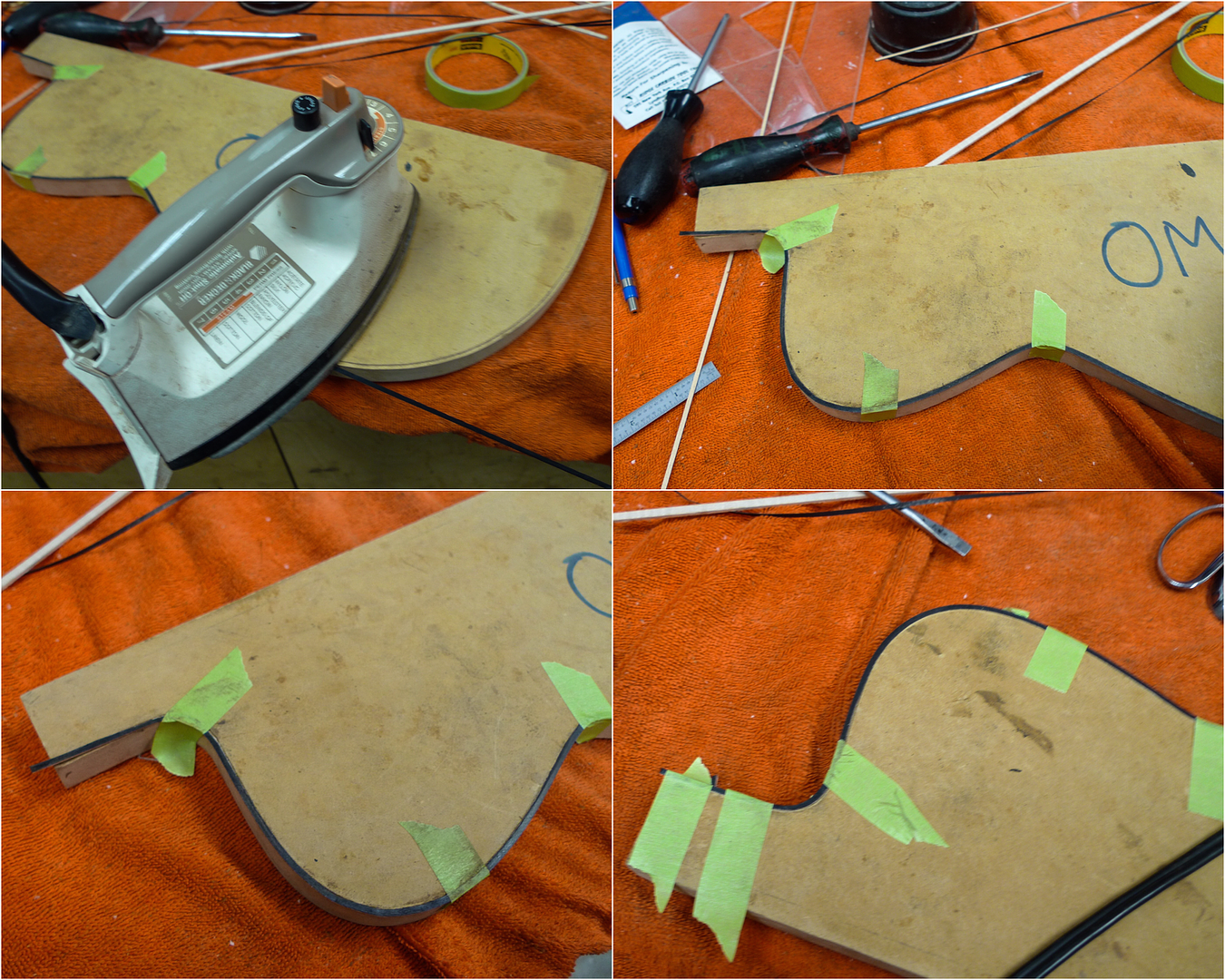 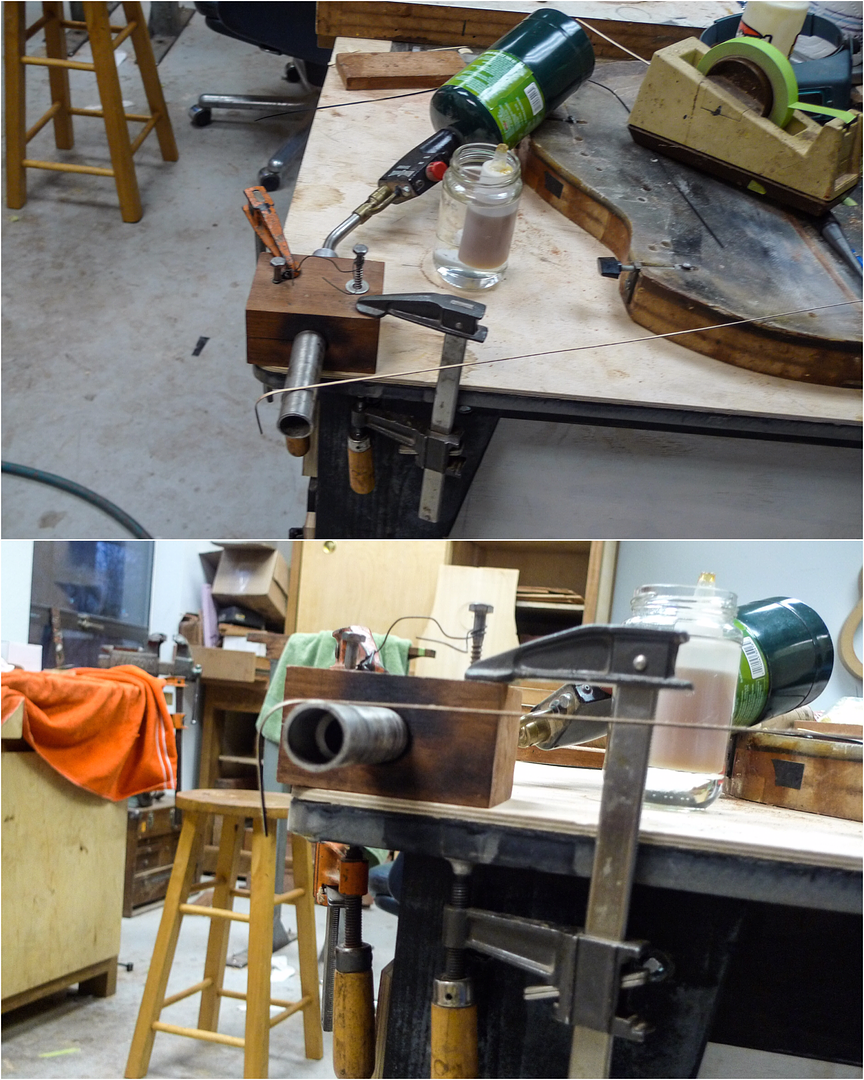
__________________
A bunch of nice archtops, flattops, a gypsy & nylon strings… |
|
#119
|
|||
|
|||
|
Lovely details! The guitar is really coming together!
Bob, would you know if Nick uses hide glue or regular titebond during construction? It’s just something I have always been curious about!
__________________
Collings OM2H Adi / Braz Doerr Legacy Swiss / Braz Franklin OM German / Braz Franklin OM Carpathian / Braz Goodall GC Italian / Honduran Goodall GC Italian / Braz Goodall CJC Italian / Braz Goodall CJC Italian / Afr. Blackwood McPherson 5.0 Full Koa McPherson 5.0XP Adi / Braz Martin D-28GE Adi / Braz |
|
#120
|
||||
|
||||
|
Quote:
Conjecture: The reason I say this if you look at his top bracing clamping fixture (post #72) I believe that HHG would not afford enough working time to use that (unlike a traditional go-bar deck where braces are clamped one at a time). General: Most builders who use HHG for many operations actually don’t use it when joining the top and back plates for the same reason (limited working time). So you really need to be specific about which building operations for HHG. Typically, top/back bracing, neck joints and bridges. Many things such as purflings and rosettes use cyanoacrylates. I have seen urethanes used for other operations by HHG builders as well... 
__________________
A bunch of nice archtops, flattops, a gypsy & nylon strings… |